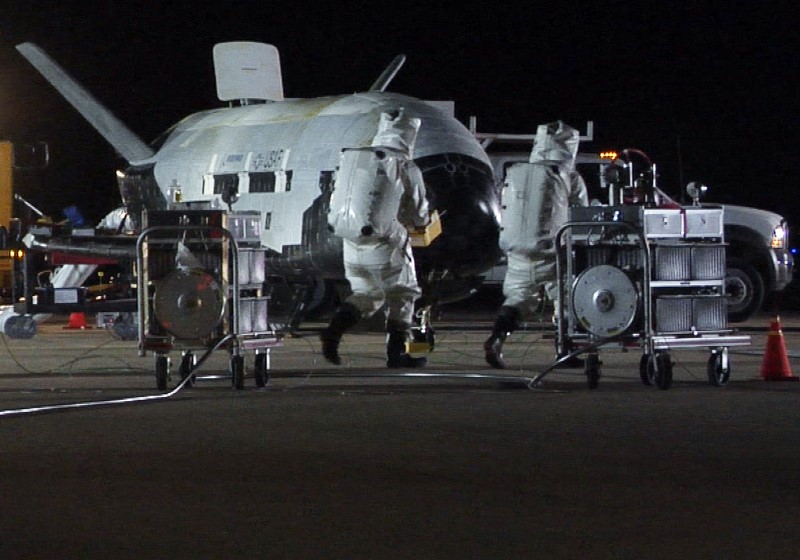
By Scott Malone and Zachary Goelman
ORLANDO, Fla. (Reuters) – Hurricane Matthew, carrying winds of 120 miles per hour (195 kph), lashed central Florida on Friday, hugging the Atlantic coast as it moved north and threatened more destruction after killing more than 500 people and leaving thousands homeless in Haiti.
Matthew, the first major hurricane that could hit the United States head on in more than a decade, triggered mass evacuations along the coast from Florida through Georgia and into South Carolina and North Carolina.
Southern Florida escaped the brunt of the storm overnight, but U.S. President Barack Obama and other officials urged people farther north not to get complacent.
“I just want to emphasize to everybody that this is still a really dangerous hurricane, that the potential for storm surge, loss of life and severe property damage exists and people continue to need to follow the instructions of their local officials over the next 24, 48, 72 hours,” Obama told reporters after a briefing with emergency management and other officials.
The Florida city of Jacksonville could face significant flooding, Florida Governor Rick Scott said. The storm had cut power to some 600,000 households in the state, he told a news conference.
In the Caribbean country of Haiti, where poor rural communities were ravaged by Matthew, the death toll surged to at least 572 people on Friday, as information trickled in from remote areas previously cut off by the storm, according to a Reuters tally of death tolls given by officials.
Matthew smashed through the tip of Haiti’s western peninsula on Tuesday with 145 mph (233 kph) winds and torrential rain. Some 61,500 people were in shelters, officials said, after the storm pushed the sea into fragile coastal villages, some of which were only now being contacted.
Cellphone networks were down and roads were flooded by sea and river water in Haiti, the poorest country in the Americas.
Aid has been slow to reach towns and villages around the peninsula. Instead, locals have been helping each other.
“My house wasn’t destroyed, so I am receiving people, like it’s a temporary shelter,” said Bellony Amazan in the town of Cavaillon, where around a dozen people died. Amazan said she had no food to give people.
At 10:00 a.m. EDT (1400 GMT), Matthew’s eye, or center, was brushing the Florida coast near the central city of Daytona Beach, the U.S. National Hurricane Center said.
“The winds are ferocious right now,” said Jeff Piotrowski, a 40-year-old storm chaser from Tulsa, Oklahoma, who early on Friday was near Cape Canaveral, home to the country’s main space launch site. The storm downed power lines and trees and destroyed billboards in Cape Canaveral, he said.
No significant damage or injuries were reported in West Palm Beach and other cities and towns in south Florida where the storm brought down trees and power lines earlier in the night, CNN and local media reported.
FALSE SENSE OF SECURITY
Craig Fugate, director of the Federal Emergency Management Agency, said he was concerned that relatively light damage so far could give people farther north a false sense of security.
“People should not be looking at the damages they’re seeing and saying this storm is not that bad,” Fugate told NBC. People should also be aware the hurricane carried more than just ferocious winds, he said.
“The real danger still is storm surge, particularly in northern Florida and southern Georgia. These are very vulnerable areas. They’ve never seen this kind of damage potential since the late 1800s.”
NASA and the U.S. Air Force, which operate the Cape Canaveral launch site, had taken steps to safeguard personnel and equipment. A team of 116 employees was bunkered down inside Kennedy Space Center’s Launch Control Center to ride out the hurricane.
Matthew lessened in intensity on Thursday night and into Friday morning, the National Hurricane Center said, but was still a Category 3 storm on the five-step Saffir-Simpson scale of hurricane intensity. Category 5 is the strongest.
It could either plow inland or tear along the Atlantic coast through Friday night, the Miami-based center said. The U.S. National Weather Service said the storm could be the most powerful to strike northeast Florida in 118 years.
The NHC’s hurricane warning extended up the Atlantic coast from southern Florida through Georgia and into South Carolina. The last major hurricane, classified as a storm bearing sustained winds of more than 110 mph (177 kph), to make landfall on U.S. shores was Hurricane Wilma in 2005.
Damage and potential casualties in the Bahamas were still unclear as Matthew passed near the capital, Nassau, on Thursday and then moved out over Grand Bahama Island.
Governor Scott has called on some 1.5 million people in coastal areas of Florida to evacuate and he continued to urge people to move away from danger on Friday.
As of Friday morning, about 22,000 people were in Florida shelters and more had moved inland or to the state’s west coast, Scott said. Georgia and South Carolina had also opened dozens of shelters for evacuees.
Those states, as well as North Carolina, declared states of emergency, empowering their governors to mobilize the National Guard. Obama declared states of emergency in Florida, Georgia and South Carolina, a move that authorized federal agencies to coordinate disaster relief efforts.
(Reporting by Susan Heavey, Eric Walsh and Doina Chiacu in Washington; Gabriel Stargardter in Miami; Joseph Guyler Delva in Haiti; Zachery Fagenson in Wellington, Fla.; Irene Klotz in Portland, Maine; Laila Kearney in New York; Writing by Frances Kerry; Editing by Bernadette Baum and Alistair Bell)



